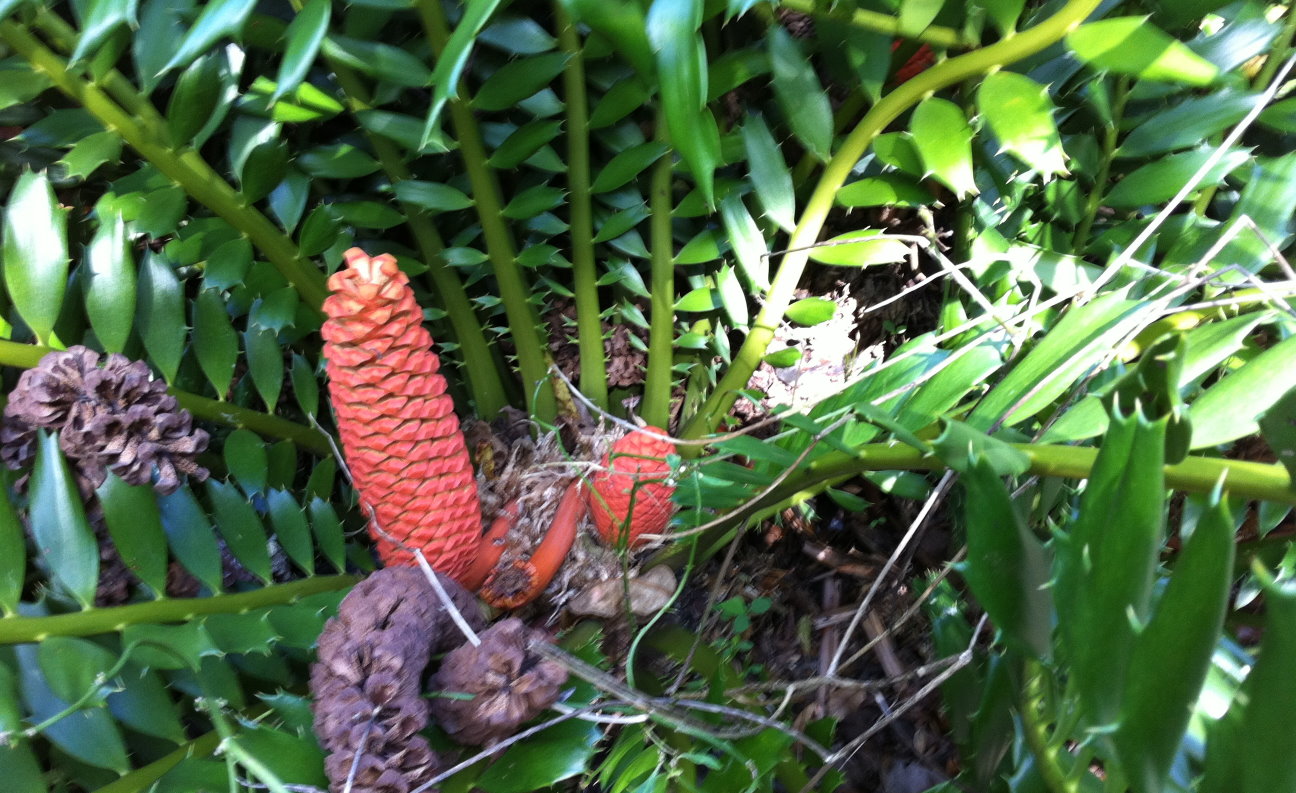Guy Cones
After having shown you the female Encephalartos ferox, I thought it unfulfilled until I find its match, and here it is. E. ferox is also known as the Zululand Cycad and you may want to know that Cycads are often referred to as "living fossils" because they have changed little since the Carboniferous period 50-60 million years ago. They belong to the group of plants called Gymnosperms (meaning "naked seeds".) The reproductive organs are produced in cones and not in flowers as in higher plants. The Afrikaans name for Cycads "broodboom" means "bread tree" and the stems of these plants have been used in the past as a source of food. The starchy pith is removed, tied up in an animal skin, fermented and then ground into a meal.
Compared to the female cones, the male cones are longer (40-50cm) and much narrower (only 8-10cm in diameter). They are held on short stems up to 3cm long. Pollination of these Cycads can be done by hand: The pollen is collected from the male cones then mixed with distilled water and sprayed into the female cones.
I really have lived the ferox part of these Cycads and was pricked numerous times when trying to get a closer shot of these cones today. Just look at the leaves, they protect the cones like a fortress!



No comments:
Post a Comment